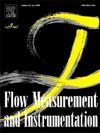空化流时空演化及流致失稳机理
IF 2.3
3区 工程技术
Q2 ENGINEERING, MECHANICAL
引用次数: 0
摘要
调节阀内部气蚀严重影响控制精度,引起振动、噪声和结构失效。通过可视化实验、数值模拟和理论分析,研究了空化流场的周期性分布特征。分析了空化周期演化与再入射流之间的耦合关系,提出了一种定量评价空化流动不稳定性的方法。研究结果表明,再入射流与空化流场的周期性演化和流动不稳定性有很强的相关性。在再入射流的作用下,空化分为附着空化和自由空化。此外,附著空化和自由空化的时空分布特征具有周期性变化,并伴随着4个不同的过程:起始、生长、脱落和崩塌。空化坍缩在空化坍缩区的尾端产生重入射流。再入射流上升并与空化结构相互作用,加速附着空化收缩、自由空化脱落和崩塌,从而促进空化向下一个循环过渡。再入射流分别在第0+3T/7和第0+5T/7处与空化结构相互作用,破坏了调节阀内空化流动的稳定,导致了第一次和第二次空化脱落事件。本研究揭示了调节阀内空化流场的周期性演化和流动不稳定的机理,为空化流动不稳定预警技术提供了重要的理论参考。本文章由计算机程序翻译,如有差异,请以英文原文为准。
The mechanism of the cavitation flow's spatiotemporal evolution and flow-induced instability
Cavitation inside the regulating valve significantly affects the control accuracy, causing vibration, noise, and structural failure. The periodic distribution characteristics of cavitation flow fields were investigated through visualization experiments, numerical simulations, and theoretical analysis. The coupling relationship between the periodic evolution of cavitation and re-entrant jet was analyzed, and a quantitative method to evaluate cavitation flow instability was also proposed. The findings indicate a strong correlation between the re-entrant jet and the periodic evolution of the cavitation flow field as well as flow instability. Under the influence of re-entrant jet, cavitation was divided into attached cavitation and free cavitation. Furthermore, the spatiotemporal distribution characteristics of both attached and free cavitation change periodically, accompanied by four distinct processes: inception, growth, shedding, and collapse. The collapse of cavitation generates re-entrant jet at the trailing end of the cavitation collapse region. The re-entrant jet ascends and interacts with the cavitation structure, accelerating the contraction of attached cavitation, the shedding and collapse of free cavitation, thereby promoting the transition of cavitation to the next cycle. The re-entrant jet interacts with the cavitation structure at t0+3T/7 and t0+5T/7, respectively, destabilizing the cavitation flow in the regulating valve and leading to the first and second cavitation shedding events. This research reveals the periodic evolution of cavitation flow field and the mechanism of flow instability in the regulating valve, providing a significant theoretical reference for the warning technology of the cavitation flow instability.
求助全文
通过发布文献求助,成功后即可免费获取论文全文。
去求助
来源期刊

Flow Measurement and Instrumentation
工程技术-工程:机械
CiteScore
4.30
自引率
13.60%
发文量
123
审稿时长
6 months
期刊介绍:
Flow Measurement and Instrumentation is dedicated to disseminating the latest research results on all aspects of flow measurement, in both closed conduits and open channels. The design of flow measurement systems involves a wide variety of multidisciplinary activities including modelling the flow sensor, the fluid flow and the sensor/fluid interactions through the use of computation techniques; the development of advanced transducer systems and their associated signal processing and the laboratory and field assessment of the overall system under ideal and disturbed conditions.
FMI is the essential forum for critical information exchange, and contributions are particularly encouraged in the following areas of interest:
Modelling: the application of mathematical and computational modelling to the interaction of fluid dynamics with flowmeters, including flowmeter behaviour, improved flowmeter design and installation problems. Application of CAD/CAE techniques to flowmeter modelling are eligible.
Design and development: the detailed design of the flowmeter head and/or signal processing aspects of novel flowmeters. Emphasis is given to papers identifying new sensor configurations, multisensor flow measurement systems, non-intrusive flow metering techniques and the application of microelectronic techniques in smart or intelligent systems.
Calibration techniques: including descriptions of new or existing calibration facilities and techniques, calibration data from different flowmeter types, and calibration intercomparison data from different laboratories.
Installation effect data: dealing with the effects of non-ideal flow conditions on flowmeters. Papers combining a theoretical understanding of flowmeter behaviour with experimental work are particularly welcome.
 求助内容:
求助内容: 应助结果提醒方式:
应助结果提醒方式:


